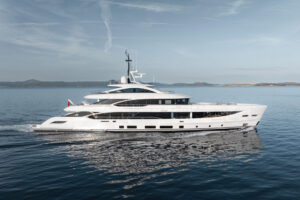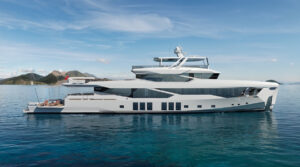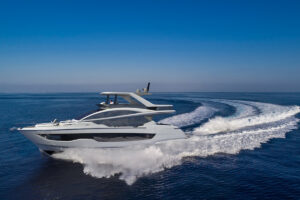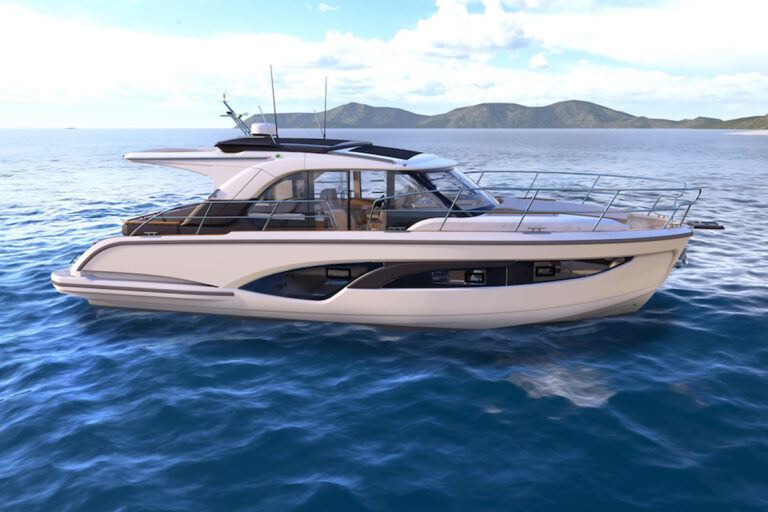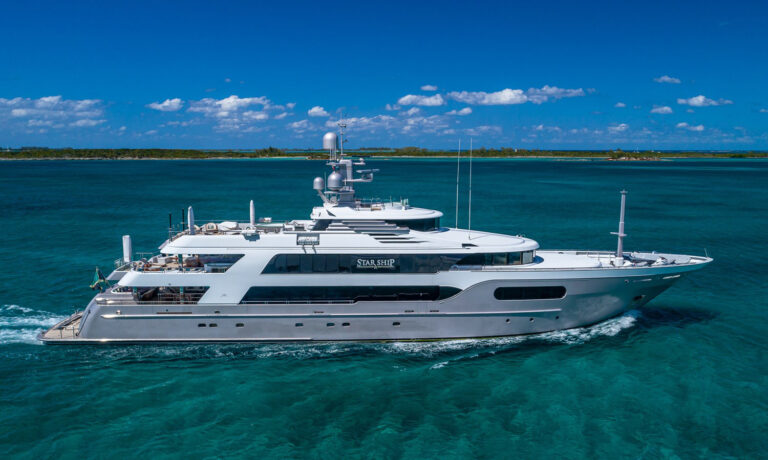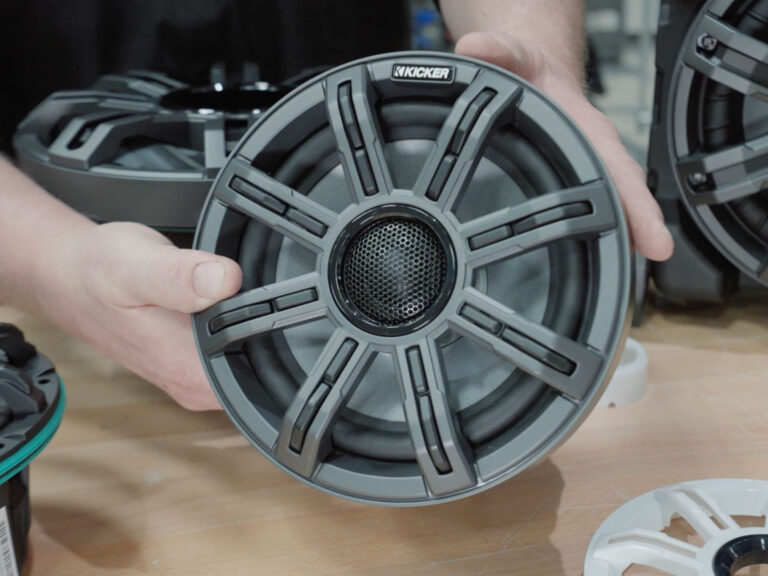The name Kay Cottee is indelibly etched in the history books dealing with world sailing achievement-the first woman to sail around the world solo, unassisted and without stopping. This incredible effort took place more than a decade ago aboard a 37-foot yacht. She was confronted by everything imaginable, from heinous storms to mind-warping calms, the challenge of rounding all the world’s major Southern Ocean capes, surviving a near collision with a ship in the middle of the night, and being hurled overboard.
Her remarkable 189-day voyage was the pinnacle of a sailing career that started with small dinghies on a Sydney waterway and grew to where she owned and operated a yacht charter business. She then built Blackmore’s First Lady for her solo circumnavigation. That yacht now holds pride of place in Australia’s National Maritime Museum in Sydney.
With such an impervious relationship with the sea, and such an incredible voyage in her wake, she has every credential needed to create what is, for her, the ultimate cruising yacht: the Kay Cottee 56.
This elegant and superbly proportioned 56-foot cutter is far from someone else’s production yacht to which Cottee has simply lent her name. It is all her. The concept, styling, layout and attention to detail all came from her hand and mind.
Better still, she is the builder. Cottee’s chosen builder told her just days before construction was to commence that he was withdrawing from the contract because he had too much other work. For most people, this would have been dream-shattering news, but within hours, Cottee had found a suitable shed near her coastal home to the north of Sydney and employed her first shipwright. With her husband, Peter Sutton, she is now overseeing a yacht-building business employing 14 craftsmen, something that reflects the amazing talent and determination of a woman who, in her spare time, is a sculptor, artist and mother.
The 56 is everything Cottee’s world-girdling sloop wasn’t. It has a plethora of creature comforts abovedeck and below that make for first-class travel under sail.
Cottee took weeks to finalize the rake of the bow, the sheerline, the styling of the broad stern and the sweeping lines of the superstructure. And she had some very definite requirements for the interior, such as spaciousness, a functional galley, a full-beam saloon, three comfortable cabins and an efficient navigation area. There is a workshop in the bow, allowing this go-anywhere yacht to be maintained, and there are 180-degree glass viewing ports in the sole of each of the two after cabins. The ports were a request from Cottee’s 8-year-old son, Lee, “so everyone can see the fish and the coral when they are anchored.
When it came to size, Cottee knew the yacht needed to be big enough to be comfortable and small enough to be easily handled by one or two people. The hull shape needed to be powerful, yet provide good all-around performance. A lifting keel that reduces the draft from 9 to 5 feet for shallow anchoring was a must. As a result, twin rudders became necessary. An efficient single foil would need to extend deeper than the keel when it was raised, and that’s not good if you bump the bottom. After 18 months of research and the drafting of the overall shape, 56 feet emerged as the perfect size.
Cottee took her design to a noted yacht designer, “to do the sums, finalize the shape and detail the engineering, she said. However, even after that was complete, she made changes while the yacht was being built, especially to the deck and cockpit styling and the interior layout. She wanted her perfect yacht to be more perfect. She also bolstered the structural integrity of the hull even more than specified in some areas.
Her influence is stamped on the entire yacht. The headsail sheets disappear belowdecks forward and emerge at the electric winches, which are in the cockpit near the helm station for easy operation. There is a low-profile bulwark from bow to stern to provide added security at sea should the skipper ever need to leave the cockpit. Twin steering wheels are fitted for better vision when under power and sail. The traveler and mainsheet system is well out of the way atop the saloon cabin, and there are voluminous stowage lockers seemingly everywhere.
Knowing comfort is paramount when cruising (remember, she spent more than six months sailing alone on a yacht), Cottee designed what is arguably the most comfortable cockpit on a yacht this size. Ergonomic considerations influenced the styling and length of the seats, which are large enough to be single beds for evenings spent in balmy tropical anchorages.
If swimming is on the agenda, the wide stairs at the rear of the cockpit lead to a large swim platform molded into the transom.
Two things impressed me when I descended the companionway stairs to the main saloon: ambience and comfort. Every inch of available space from gunwale to gunwale is used to the fullest. The natural light pouring in via the large cabin windows highlights the high-quality timber finish that is on par with the best. Teak is nowhere to be seen; the saloon is a well-balanced combination of beautifully grained blackwood and Tasmanian oak. There’s no veneered timber, either. Everything is solid, so much so that the locker doors close with a reassuring clunk instead of a flimsy click.
The lounge-dining arrangement to port is ideal in size and location. A large flat-screen television, when not concealed in its locker, can be viewed from the lounge. A central bench seat that runs fore and aft amidships conceals the hydraulics required for the lifting keel.
The 56’s galley is on the port side, just forward of the main saloon and designed to be discreetly separated from the main lounge area while keeping anyone in the galley part of the gathering. Countertops are Corian, and every appliance expected in a yacht of this standard is fitted.
The timber-lined owner’s stateroom is forward. It has a queen island berth with bedside tables, a writing desk and an appropriately proportioned head.
The two after cabins have heads, and the starboard cabin also includes a neatly concealed washing machine and dryer. The starboard cabin has a double berth, and the portside cabin has two singles. There is air conditioning throughout.
With the sails set from the simple yet strong 68-foot-high rig, this design impressed me in light winds and strong. With roller furling fitted to the 107 percent overlap genoa, the self-tacking staysail and the mainsail (in-boom for the mainsail), sail reduction in strong winds was easy and efficient. Being rigged as a cutter means she maintained good balance when the genoa was furled and the staysail remained set.
The original thought behind the Kay Cottee 56 was that she would be a one-off. But as her uniqueness emerged, outside interest grew. Cottee expects to build a 56 about every eight months and plans to tailor each one to suit the owner’s requirements. Even the lift keel is optional. The second boat is well under way, and hull number one has been sold.
Cottee’s dream yacht, the one she still intends to build for herself to sail around Australia with family and friends, is probably boat three or four.
Contact: SailAus Pty Ltd., (011) 61 26 645 5088; sailaus@nor.com.au; www.kaycottee.com.

